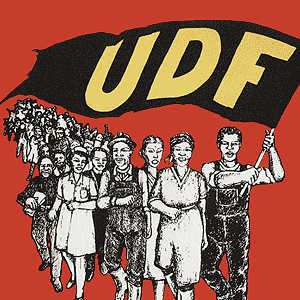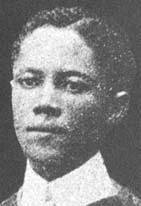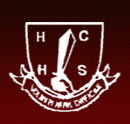Related Research Articles
Apo or APO may refer to:

The Cape Flats is an expansive, low-lying, flat area situated to the southeast of the central business district of Cape Town. The Cape Flats is also the name of an administrative region of the City of Cape Town, which lies within the larger geographical area.

Coloureds refers to members of multiracial ethnic communities in South Africa, Namibia and to a lesser extent, Zimbabwe and Zambia who have ancestry from African, European, and Asian people. The intermixing of different races began in the Cape province of South Africa, with European settlers intermixing with the indigenous Khoi tribes, and Asian slaves of the region. Later various other European nationals also contributed to the growing mixed race people, who would later be officially classified as coloured by the apartheid government in the 1950s.

South Africa is a Christian majority nation with Islam being a minority religion, practised by roughly 1.6% of the total population. Islam in South Africa has grown in three different phases. The first phase brought the earliest Muslims as part of the involuntary migration of slaves, artisans, political prisoners, and political exiles from the Dutch East Indies to the Cape Colony from 1652 to 1800. The second phase was the arrival of indentured labourers from British India to work in the sugar-cane fields in Natal from 1860 to 1911. Of the approximately 176,000 Indians of all faiths who were transported to the Natal province, almost 7–10% of the first shipment were Muslims.

District Six is a former inner-city residential area in Cape Town, South Africa. In 1966, the apartheid government announced that the area would be razed and rebuilt as a "whites only" neighbourhood under the Group Areas Act. Over the course of a decade, over 60,000 of its inhabitants were forcibly removed and in 1970 the area was renamed Zonnebloem, a name that makes reference to an 18th century colonial farm. At the time of the proclamation, 56% of the district’s property was White-owned, 26% Coloured-owned and 18% Indian-owned. Most of the residents were Cape Coloureds and they were resettled in the Cape Flats. The vision of a new white neighbourhood was not realised and the land has mostly remained barren and unoccupied. The original area of District Six is now partly divided between the suburbs of Walmer Estate, Zonnebloem, and Lower Vrede, while the rest is generally undeveloped land.

Worcester is a town in the Western Cape, South Africa. It is the third-largest city in the Western Cape Province of South Africa. It is located 120 kilometres (75 mi) north-east of Cape Town on the N1 highway north to Johannesburg.

Apartheid was a system of institutionalised racial segregation that existed in South Africa and South West Africa from 1948 to the early 1990s. It was characterised by an authoritarian political culture based on baasskap, which ensured that South Africa was dominated politically, socially, and economically by the nation's minority white population. Under this minoritarian system, white citizens held the highest status, followed by Indians as well as Coloureds and then Black Africans. The economic legacy and social effects of apartheid continue to the present day, particularly inequality.

The United Democratic Front (UDF) was a South African popular front that existed from 1983 to 1991. The UDF comprised more than 400 public organizations including trade unions, students' unions, women's and parachurch organizations. The UDF's goal was to establish a "non-racial, united South Africa in which segregation is abolished and in which society is freed from institutional and systematic racism." Its slogan was "UDF Unites, Apartheid Divides." The Front was established in 1983 to oppose the introduction of the Tricameral Parliament by the white-dominated National Party government, and dissolved in 1991 during the early stages of the transition to democracy.
Alex La Guma was a South African novelist, leader of the South African Coloured People's Organisation (SACPO) and a defendant in the Treason Trial, whose works helped characterise the movement against the apartheid era in South Africa. La Guma's vivid style, distinctive dialogue, and realistic, sympathetic portrayal of oppressed groups have made him one of the most notable South African writers of the 20th century. La Guma was awarded the 1969 Lotus Prize for Literature.

Alexander Sinton Secondary School, also known as Alexander Sinton High School, is an English-medium school in Athlone, a suburb of Cape Town, South Africa. The school is located in the Cape Flats, an area designated as non-white under the Group Areas Act during apartheid. The school was involved in the anti-apartheid student uprisings of the 1970s and 1980s. Staff and students at the school made headlines when they barricaded the police into their school in September 1985. The following month, three youths were killed near the school by police officers who opened fire on protesters in the Trojan Horse Incident. It was the first school to be visited by Nelson Mandela after his release from prison. As of 2014, the school has 1,100 pupils, half boys and half girls. The school employs 40 teachers and six non-teaching staff.

Abdullah Abdurahman was a South African politician and physician, born in Wellington, Cape Colony. He was the first Coloured city councillor of Cape Town, and the first ever Coloured South African to win election to a public body. He led the anti-segregationist movement African Political Organization established in 1902.
Zainunnisa "Cissie" Gool was an anti-apartheid political and civil rights leader in South Africa. She was the daughter of prominent physician and politician Abdullah Abdurahman and mother Helen Potter James. Gool founded the National Liberation League and helped to create the Non-European United Front (NEUF). She was known and loved as the "Jewel of District Six" and "Joan of Arc" by South Africans as a champion of the poor.

Coloured people in Namibia are people with both European and African, especially Khoisan and Bantu ancestry, as well as Indian, Malay, and Malagasy ancestry especially along the coast and areas bordering South Africa. Coloureds have immigrated to Namibia, been born in Namibia or returned to the country. These distinctively different periods of arrivals, from diverse backgrounds and origins have led to a diverse Coloured population. This diversity was even further exploited by South African officials who referred to three distinct groups amongst the coloureds, namely: "Baster", "Cape Coloureds" and "Namibian Coloureds".
The following is a timeline of the history of Cape Town in the Western Cape province of South Africa.

Trafalgar High School is a public English medium co-educational secondary school in District Six of Cape Town in South Africa. It was the first school built in Cape Town for coloured and black students. The school took a leading role in protesting against apartheid policies. It celebrated its centenary in 2012 and is still running and was recently declared a heritage site.

Harold Cressy was a South African headteacher and activist. He was the first Coloured person to gain a degree in South Africa and he worked to improve education for non-white South Africans. He co-founded a teachers group which opposed the apartheid Bantu Education Act.

Harold Cressy High School is a secondary school in District Six of Cape Town in South Africa. It was founded in January 1951 as the Cape Town Secondary School. The school has played a substantial role in South African history during the apartheid period and the building is identified as an important landmark.
The history of gangs in South Africa goes back to the Apartheid era.
The Teachers' League of South Africa (TLSA) was an organization for coloured teachers founded in Cape Town in June of 1913. The group, while originally focused on issues surrounding education, became increasingly political in the mid-1940s and started to agitate against apartheid. Due to state suppression, the group became defunct in 1963.

Cape independence, also known by the portmanteau CapeXit, is a political movement that seeks the independence of the Western Cape province from South Africa.
References
- 1 2 3 "African People's Organisation (APO)". South African History Online. 1 May 2018. Retrieved 31 July 2023.
- ↑ Adhikari, Mohamed (July 1997). "'The Product of Civilization in its most Repellant Manifestation': Ambiguities in the Racial Perceptions of the APO (African Political Organization), 1909–23". Journal of African History . 38 (2): 283–300. doi:10.1017/S0021853796006949.
- ↑ "African People's Organization (political party, South Africa)". Encyclopædia Britannica . Retrieved 16 August 2014.
- ↑ History Archived 12 August 2014 at the Wayback Machine , school site, retrieved 11 August 2014
